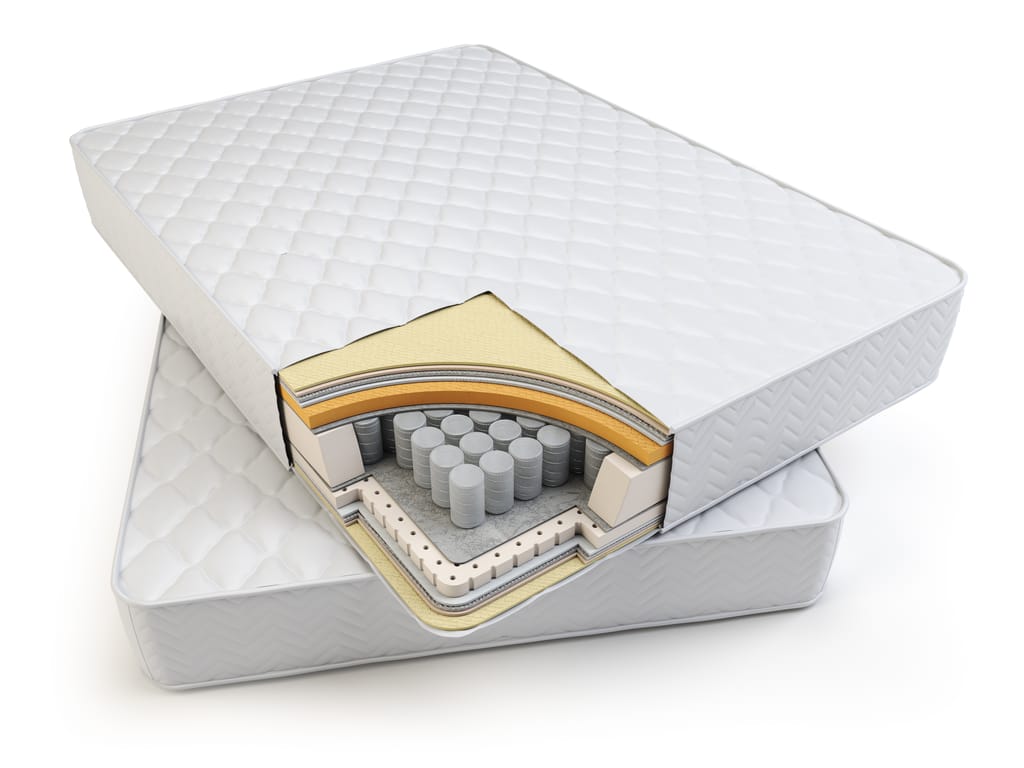What is a mattress comfort layer?
The comfort layer is the layer of a mattress that comes into direct contact with the sleeper’s body. They often make the comfort layer of materials that are soft, such as down, memory foam, or latex. This layer helps to cushion and support the sleeper’s body and can cooperate to regulate temperature.

What it is
A mattress comfort layer is placed on top of the mattress support layer and is designed to provide cushioning and contouring to the body. It is designed to provide a cushioning effect and also to provide contouring to the body.
This layer reduces pressure points, providing a more comfortable and restful sleep. The comfort layer also helps to provide support to the spine and other body parts, allowing the body to stay in a healthy posture while sleeping.
The mattress support layer is the layer that provides the foundation for the mattress. This layer is usually made of a firmer material and is designed to provide the necessary support for the mattress. The support layer helps to ensure that the mattress remains level and provides stability.
The difference between the comfort layer and the support layer is that the comfort layer provides cushioning and contouring while the support layer provides the foundation and stability for the mattress. While both layers are important for a comfortable sleeping experience, the comfort layer provides the cushioning and contouring that make it more comfortable for the user.
Purpose of a mattress comfort layer
Mattress comfort layers come in all different shapes and sizes. Some people choose a thinner comfort layer, while others prefer a thicker layer. The comfort layer’s thickness also depends on the type of mattress it is being used in. They often use a thicker layer in a foam mattress, while they use a thinner layer in an innerspring mattress.
A comfort layer’s main purpose is to provide comfort and support to the sleeper. It does this by cushioning the sleeper’s body and distributing their weight evenly. This helps to prevent any pressure points from developing, which can cause pain and discomfort.
A comfort layer is also responsible for regulating the temperature of the mattress. A thicker layer will often be able to trap more heat than a thinner layer. This is an important feature for people who sleep hot. A comfort layer made of cooling materials, such as gel or latex, can help to keep the sleeper cool.
When choosing a comfort layer, it is important to consider the type of mattress and the sleeper’s preferences. A thicker layer is often a good choice for people who prefer a lot of support and cushioning. A thinner layer is often a good choice for people who prefer a softer surface.
Choosing the right comfort layer
There are a variety of different materials used for comfort layers, including memory foam, latex, polyfoam, and hybrid combinations. Here are some tips for choosing the right comfort layer for you:
- Consider your sleeping position. Different mattress comfort layers are designed to fit different sleeping positions. Memory foam and latex are ideal for side sleepers, as they provide cushioning and pressure relief. Polyfoam is more suitable for back and stomach sleepers, as it is more firm and supportive.
- Consider your body weight. Heavier individuals may need a thicker, more supportive comfort layer to ensure adequate cushioning and support. Lighter individuals may prefer a thinner comfort layer to prevent feeling trapped in the mattress.
- Consider your temperature preferences. Memory foam and polyfoam are more heat-retentive, while latex and hybrid mattress comfort layers offer more breathability.
- Consider your budget. Memory foam and latex comfort layers tend to be more expensive than polyfoam and hybrid comfort layers.
Conclusion
A mattress comfort layer can be a crucial part of getting a good night’s sleep. By choosing the right material for your comfort layer, you can customize your mattress to meet your needs and improve your sleep quality.
Reference
- Noyed, D. (2021, June 11). Mattress Comfort Layers. Sleep Foundation. https://www.sleepfoundation.org/mattress-construction/mattress-comfort-layers
- Morgan, R. (2023, February 14). Mattress Comfort Layers. MattressHelp.org. https://mattresshelp.org/mattress-comfort-layers/